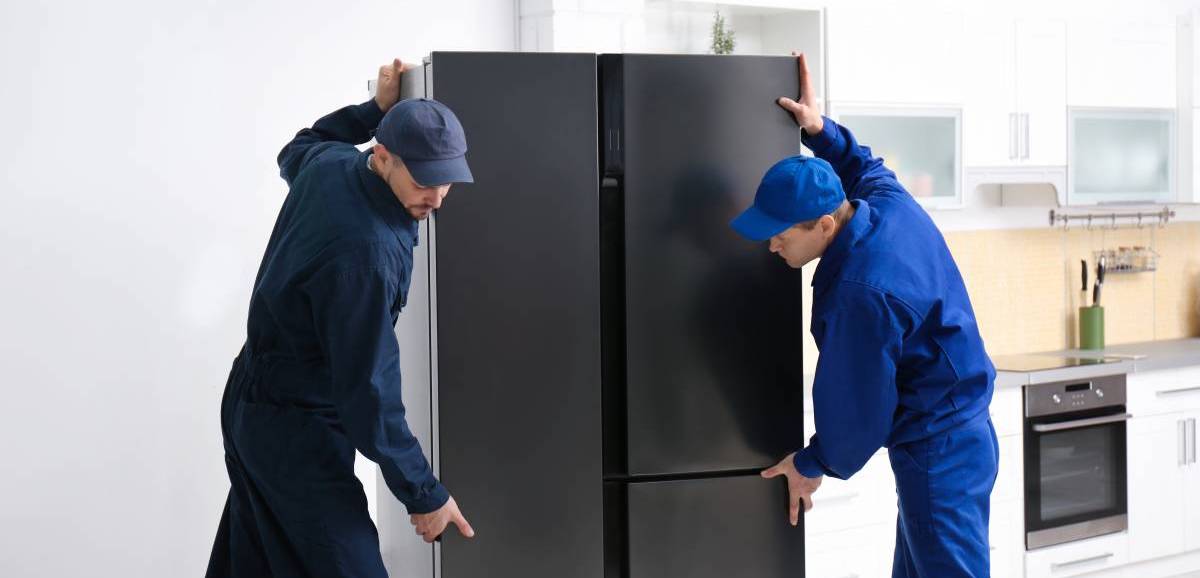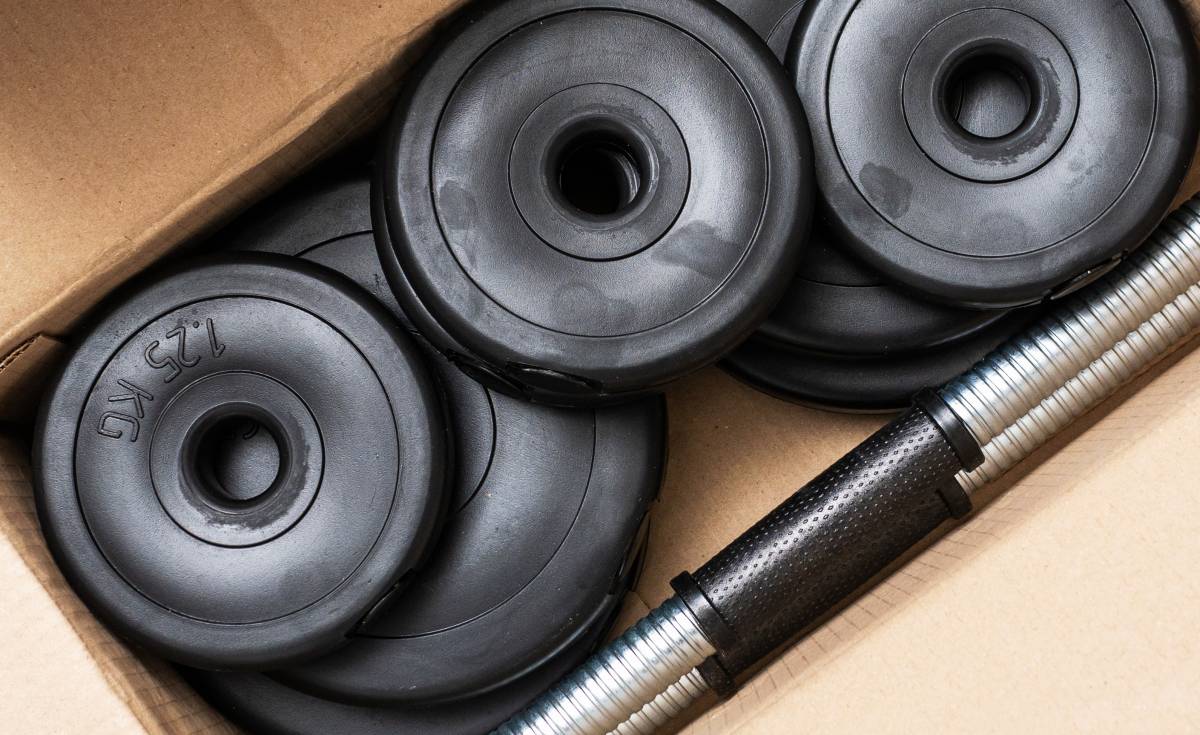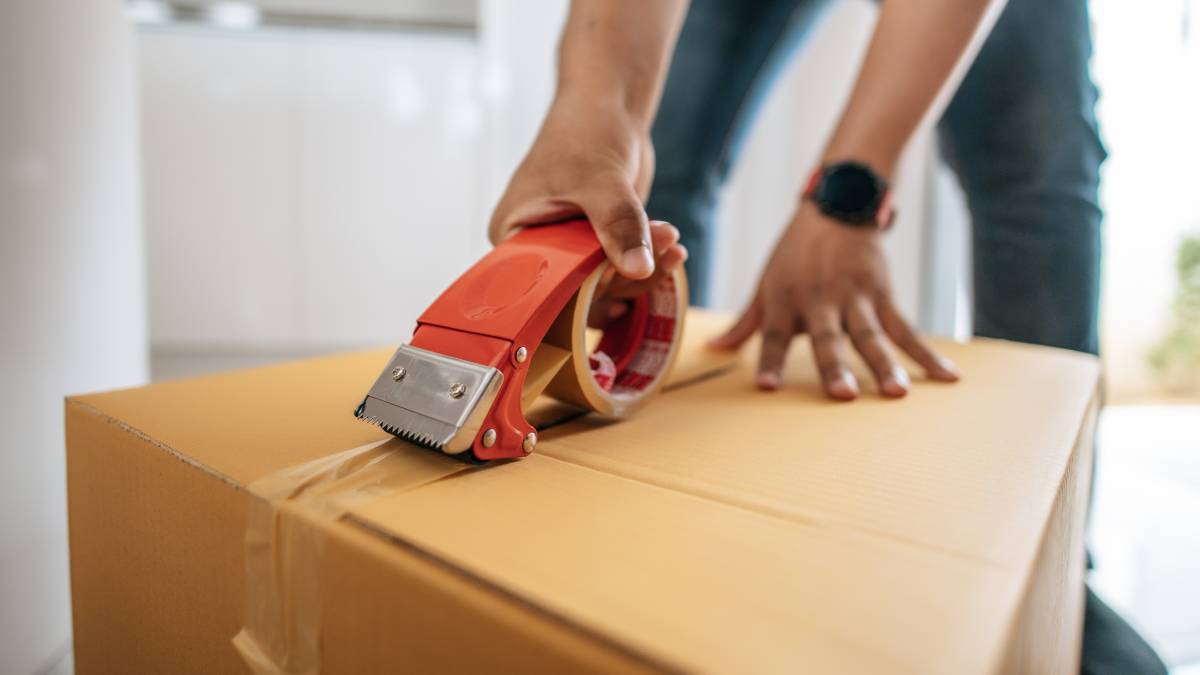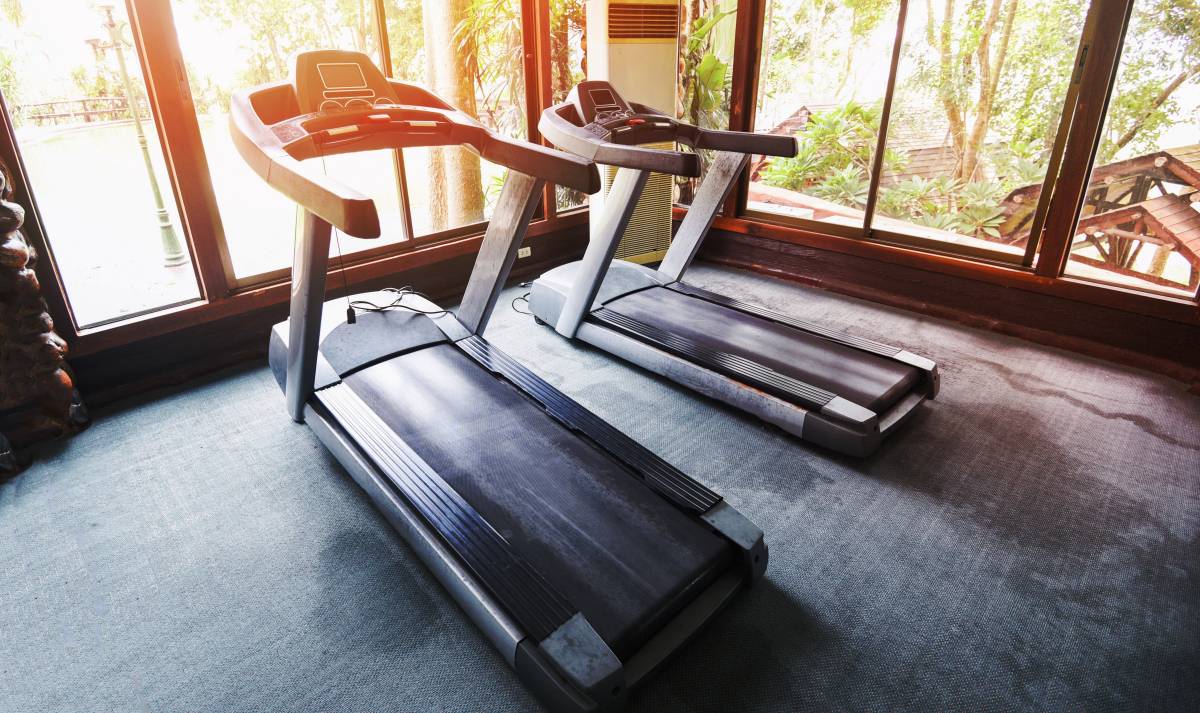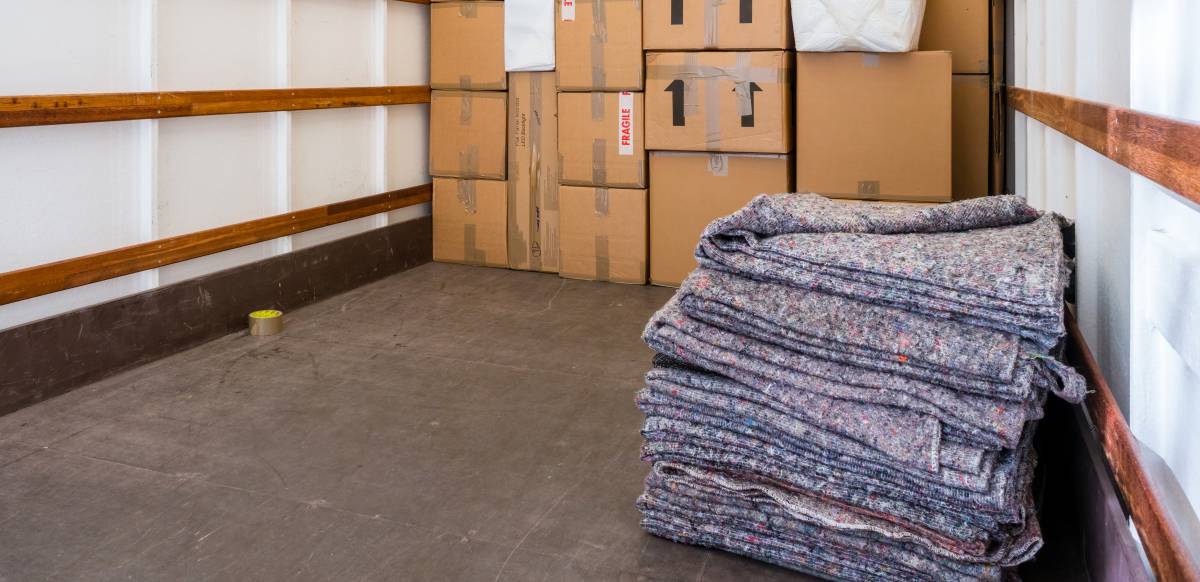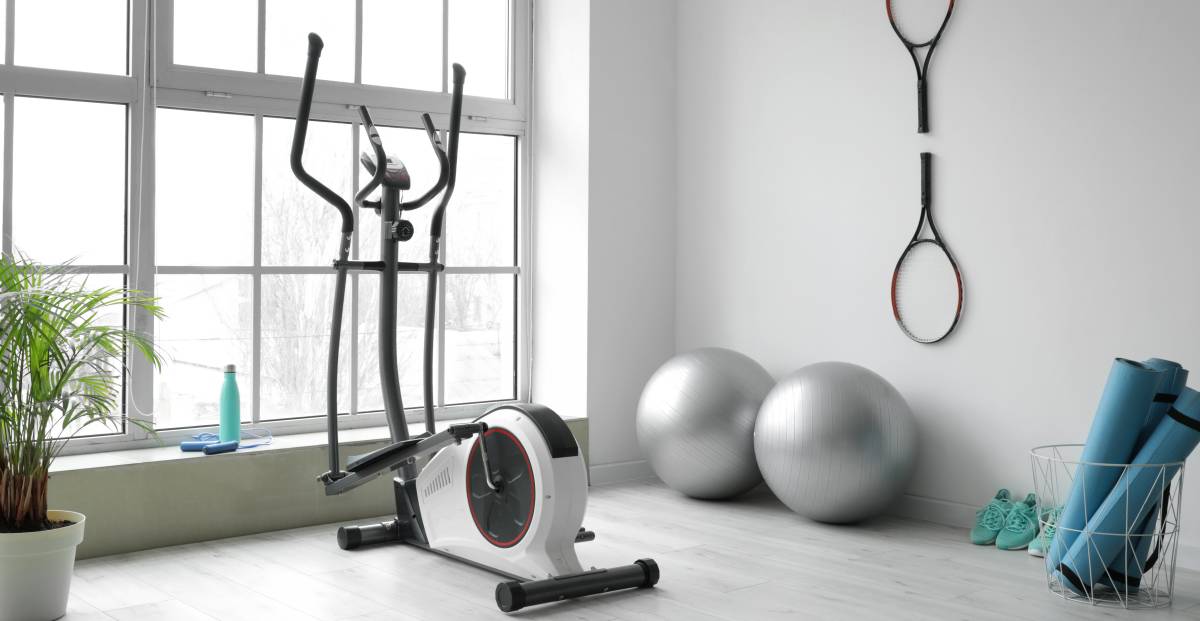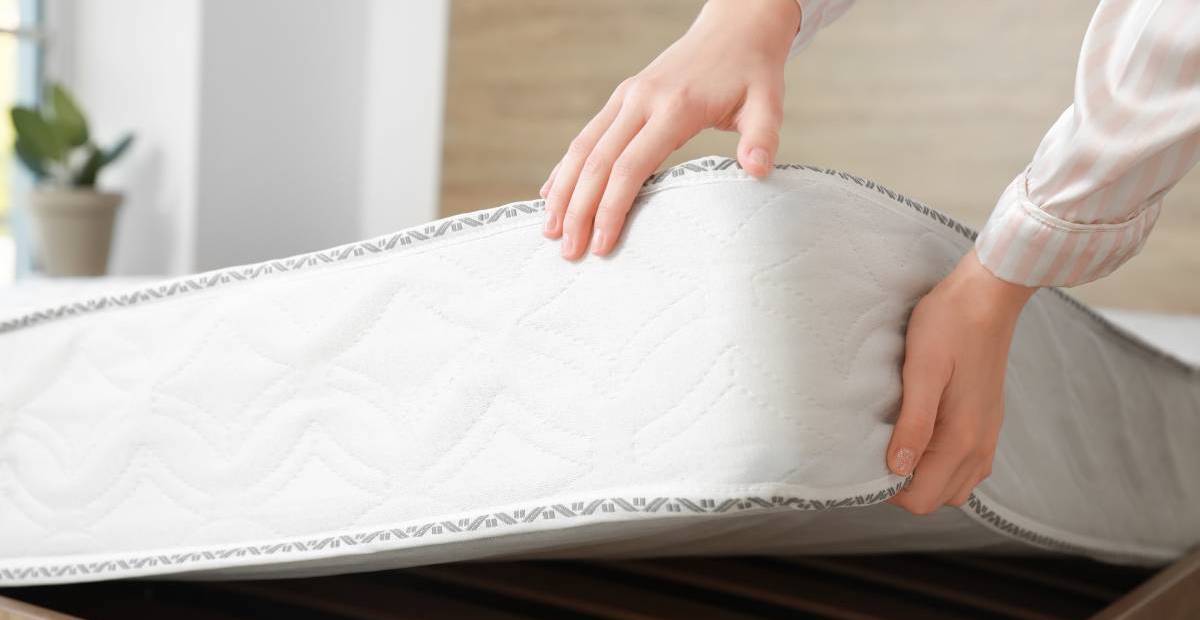
- Home/
- Comparisons/
- Moving/
- Hand Truck vs. Dolly
Hand truck vs. dolly: Which one is better for your load?
A guide to picking the best moving tool based on cost, versatility, and more.
Last Updated on

Written by Genine T.
Staff Writer
Read more about our contributor
Key Facts
A hand truck has two wheels and an upright frame, which is ideal for moving tall, heavy items like boxes or appliances by tilting and rolling.
A dolly is a flat platform with four swivel wheels, designed for large or multiple items that must stay level.
Moving big, bulky items? You’ll need the right gear to avoid injury and endless headaches. Based on US furniture data, a wooden credenza can weigh around 225 lbs, and a double-pedestal office desk might top 200 lbs. Even a humble dining table can clock in at 75 lbs, while a loaded filing cabinet could hit 100 lbs or more. When you’re staring down weights like these, the hand truck vs. dolly choice can absolutely make or break your moving day.
To help you out, this guide will unpack the key differences between these two essential tools, discuss in detail their strengths and weaknesses across seven factors, and show you exactly when each one works best. We’ll also cover practical stuff like weight limits, terrain compatibility, and cost considerations, so you can make the right decision about dolly vs. hand truck for your next move.
What is a hand truck?
 Moving supplies including stacked boxes and a hand truck. (Source: iStock)
Moving supplies including stacked boxes and a hand truck. (Source: iStock)
A hand truck is a simple, sturdy L-shaped tool designed to move heavy or bulky items with far less strain. It has two wheels, a tall frame with handles, and a toe plate that slips under boxes, furniture, packed small appliances, or gear. Once loaded, you tilt it back so the weight balances on the wheels, letting you roll instead of lift. Depending on the build, most hand trucks can carry between 299 lbs and 992 lbs.
Small load movers often rely on hand trucks for apartment relocations, appliance deliveries, and anything involving stairs or tight corners. Some models are tailored to specific items and terrains as well:
Upright hand truck (utility dolly): The classic model for boxes and tall items over short distances
Appliance hand truck: Comes with straps and rails to stabilize fridges, washers, and dryers
Convertible hand truck: Switches from upright mode to a flat cart for larger loads
Stair-climbing hand truck: Features rotating wheels to glide up steps smoothly
Folding hand truck: Compact and easy to store between jobs or in the back of a car
What is a dolly?
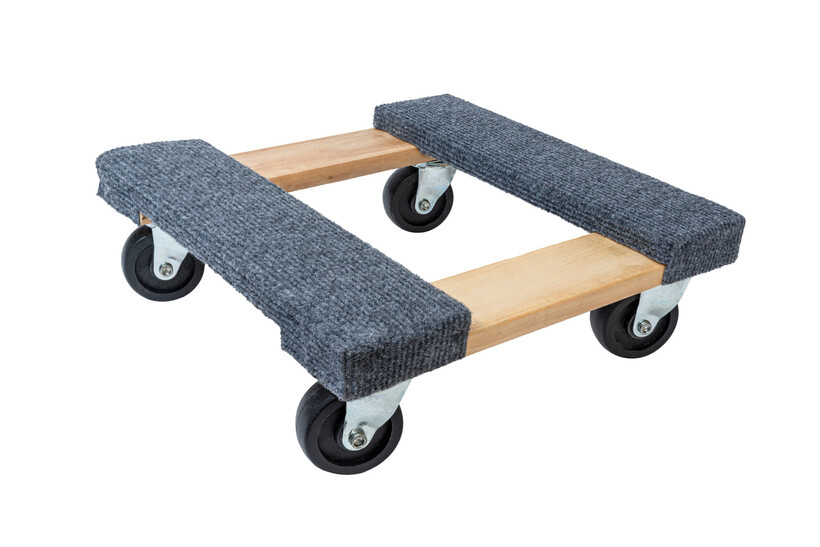 Heavy-duty dolly used for moving furniture and large boxes. (Source: iStock)
Heavy-duty dolly used for moving furniture and large boxes. (Source: iStock)
A dolly features a flat platform supported by four swivel wheels that move in all directions. The low-profile design keeps loads stable and close to the ground, with weight capacities ranging from 299 lbs for standard models up to 2998 lbs for heavy-duty versions. If you need to transport your fridge, move heavy furniture, or carry multiple boxes and wide objects across smooth, level surfaces, investing in dollies is a great choice.
Depending on your moving needs, you can choose from several four-wheel designs:
Furniture dolly: Low-profile platform with swivel casters for sliding under large furniture pieces
Carpeted dolly: Raised carpeted edges protect delicate items during transport
Rubber dolly: Heavy-duty construction with raised rubber sides, supports 881 lbs+ loads
Platform dolly: Flat platform with a small upright handle for improved steering control
Specialty dollies: Purpose-built designs like piano dollies with reinforced bases for specific equipment
Dolly vs. hand truck: Which should you choose?
Not sure whether to go with a dolly or a hand truck? Below, we’ve broken down key factors like weight, maneuverability, and terrain so you can pick the right equipment with confidence (and maybe avoid a few sore muscles).
In terms of weight capacity
Hand trucks excel at moving single heavy items through their leverage system, with up to 992 lbs for heavy-duty steel models. Thanks to their two-wheel design, the weight tips back over the axle, making it surprisingly easy to load and move around a 440 lbs fridge or stacked washer-dryer. Some industrial-grade models even haul gear over 881 lbs, including large items like commercial ice machines or gun safes, if the load is secured and balanced properly.
On the other hand, dollies are better if you have serious weight requirements or want to avoid multiple trips. With four wheels to spread the load, a quality dolly for moving makes it easy to transport a 330 lbs dining table plus packed boxes when moving your books in one go. For oversized or delicate items, a platform dolly can carry a mix of shapes and sizes, such as filing cabinets, flat-pack furniture, warehouse stock, or stacked appliances.
Whatever equipment you choose, remember to always center heavy loads over the axle for hand trucks or evenly distribute them across dolly platforms. You should also secure items over 440 lbs with quality ratchet straps to prevent shifting during transport and avoid stacking loads so high that you lose visibility or balance.
In terms of maneuverability
 Moving boxes efficiently with a hand truck on a sidewalk. (Source: iStock)
Moving boxes efficiently with a hand truck on a sidewalk. (Source: iStock)
Dollies and hand trucks meet different maneuverability needs. Between the two, hand trucks are built for tight turns and tricky spaces. Their slim vertical frame means you can get into tight spaces and pivot easily through doorways, angle around furniture, and manage narrow walkways. Some models come with tri-wheel systems that can turn 360 degrees while climbing stairs, perfect for apartment buildings, cramped storage rooms, and any multi-level move.
Moving to open floor areas? Dollies work best in wide, open areas requiring a wider turning radius. Their four-wheel setup allows movement in any direction, making them great for garages, hallways, or large rooms. If you’ve been packing boxes correctly, you can move loads smoothly across level surfaces, though they struggle with uneven terrain and aren’t suitable for stairs.
In terms of ease of use
Dollies feel more intuitive for first-time users since the motion mirrors what people naturally do: push and pull. Once loaded, they’re forgiving and stable, allowing you to focus on steering rather than balancing. The wide platform means fragile items or heavy appliances stay put, and you can stop or change direction without worrying about loads shifting or falling. Keep in mind that loading heavy items onto a dolly often requires two to three people.
Contrary to that, hand trucks require more coordination and skill to be used effectively. You need to learn how to tilt it, maintain balance while moving, and constantly adjust your grip and posture. The learning curve is steeper since getting the balance wrong means your items can slide off or tip over. However, once you’ve developed the technique, many users find hand trucks faster and less physically demanding for navigating tight spaces and stairs.
In terms of the size and shape of the load
 Secured and padded furniture ideal for dolly transport. (Source: iStock)
Secured and padded furniture ideal for dolly transport. (Source: iStock)
Choosing a hand truck or dolly depends on how your load behaves when moved. For instance, hand trucks suit items that stay stable when tilted back at an angle. Tall, narrow shapes like bookshelves, filing cabinets, or stacked boxes work perfectly, especially when navigating through doorways or tight spaces. Loads with solid bases and rigid structures are also great for hand trucks since they can rest securely against the frame without shifting or losing balance during transport.
If you have wide, low, or fragile loads that must stay level, then using a dolly to move your items is a must. Moving wide furniture pieces like sideboards and couches also benefits from the stable platform, while items with loose components (like chairs with removable cushions or electronics with detachable parts) stay secure without shifting. The flat surface also handles awkward shapes that don’t have a clear “base” to rest against a hand truck frame.
In terms of terrain compatibility
Given that hand trucks have two large wheels, they excel across varied terrain through their ability to tilt and roll over obstacles. The larger wheels easily navigate carpet, hardwood, gravel, and uneven ground, while models with pneumatic tires absorb bumps and handle outdoor surfaces effectively. A properly equipped moving hand truck can work on curbs, driveways, and mixed indoor flooring while keeping loads stable and controlled.
As for dollies, they work best on smooth, flat surfaces like polished concrete or hardwood floors. However, they struggle with thick carpet, uneven paths, cracked pavement, or any outdoor terrain where the four-wheel design can’t maintain consistent contact. Even dollies with air-filled wheels perform poorly on slopes or stairs, with wheels easily catching on obstacles or losing traction. Most moving safety tips suggest using dollies only on indoor level surfaces to prevent tipping, wheel jamming, or loss of control.
In terms of cost
 Mover handling boxes in a warehouse or storage facility. (Source: iStock)
Mover handling boxes in a warehouse or storage facility. (Source: iStock)
Dollies are usually cheaper upfront, especially for basic models. You can pick up a simple moving cart for under $80. That said, costs rise quickly for specialized options like car tow dollies or large platform versions, which can go well beyond $300.
Hand trucks start a bit higher, often around $100, and range up to $400 or more for heavy-duty or convertible models. While they cost more, they offer better long-term value if you move things regularly or need a cart that adapts to different tasks.
In terms of versatility
The good thing about hand trucks is that they aren’t limited to moving day. Their upright design and balanced frame make them useful for everything from deliveries and garden clean-ups to shifting supplies around a workshop or job site. Because they adapt easily to different load shapes and surfaces, they’re a practical tool to keep on hand long after the move is done.
Dollies, on the other hand, are designed with one main task in mind: transporting bulky items across smooth, level floors. As a moving cart, they do that job well, especially for heavier furniture or stacked boxes. Outside of those situations, their bulky frame and limited maneuverability make them harder to repurpose, so they often end up sitting unused between moves.
Book a mover on Airtasker today
Now that you know how hand trucks and dollies compare, you’re ready to make an informed decision that fits your move. Remember, getting the right equipment upfront will save your back, speed up the process, and prevent those frustrating moments where you’re stuck wrestling with something too heavy to handle alone.
If the job feels too awkward, heavy, or difficult to manage alone, Airtasker connects you with local movers who bring the gear, skill, and experience to do it safely. From narrow stairwells to oversized furniture, Taskers help take the pressure off, so you can focus on settling in.
Learn more about our contributors

Written by Genine T.
Staff Writer
Genine is a writer and educator with over seven years of experience. She has published peer-reviewed research papers, worked in academia, and created educational content for thousands of language learners. She discovered her passion for turning complex ideas into practical advice through writing about DIY topics like home improvement, furniture assembly, and household fixes. When she’s not writing, Genine enjoys curling up with her dogs and a good book.
Hand Truck vs. Dolly
Hand Truck |
Dolly |
|
|---|---|---|
Weight Capacity |
Best for one heavy item up to 992 lbs. |
Best for big or multiple items up to 2,998 lbs. |
Maneuverability |
Easier in tight spaces, corners, and stairs |
Better suited to wide, open areas with flat floors |
Ease of Use |
Easier to load solo, but takes practice to balance and steer |
Simple to move once loaded, but lifting items onto it can be harder |
Size and Shape of Load |
Best for tall, stable items that can be tilted upright |
Works well for wide, flat, or fragile loads that need to stay level |
Terrain Compatibility |
Handles bumps, stairs, and uneven surfaces |
Works best indoors on smooth, level ground |
Cost |
Higher upfront, but adds value with year-round use |
Budget-friendly for one-time, indoor moves |
Versatility |
Handy for all kinds of tasks beyond moving day |
Mostly useful for big items on moving day only |
FAQs on hand trucks and dollies
It’s safer to push, especially on flat ground. Pulling can help when going up stairs or over curbs since it gives you more control while lifting.
Yes, many fold flat to just a few inches wide and can be stored in car trunks or closets.
Some do, but not all. If yours doesn’t, you can usually buy a handle attachment for better grip and control.
A utility dolly is great for boxes and small furniture. On the other hand, an appliance dolly is built tougher, with straps and rails for safely moving things like fridges or washing machines.
Find local movers, fast
Post a task
Related articles

A guide to becoming a mover
Read more

How much do movers make?
Read more

Tips for moving house with kids
Read more
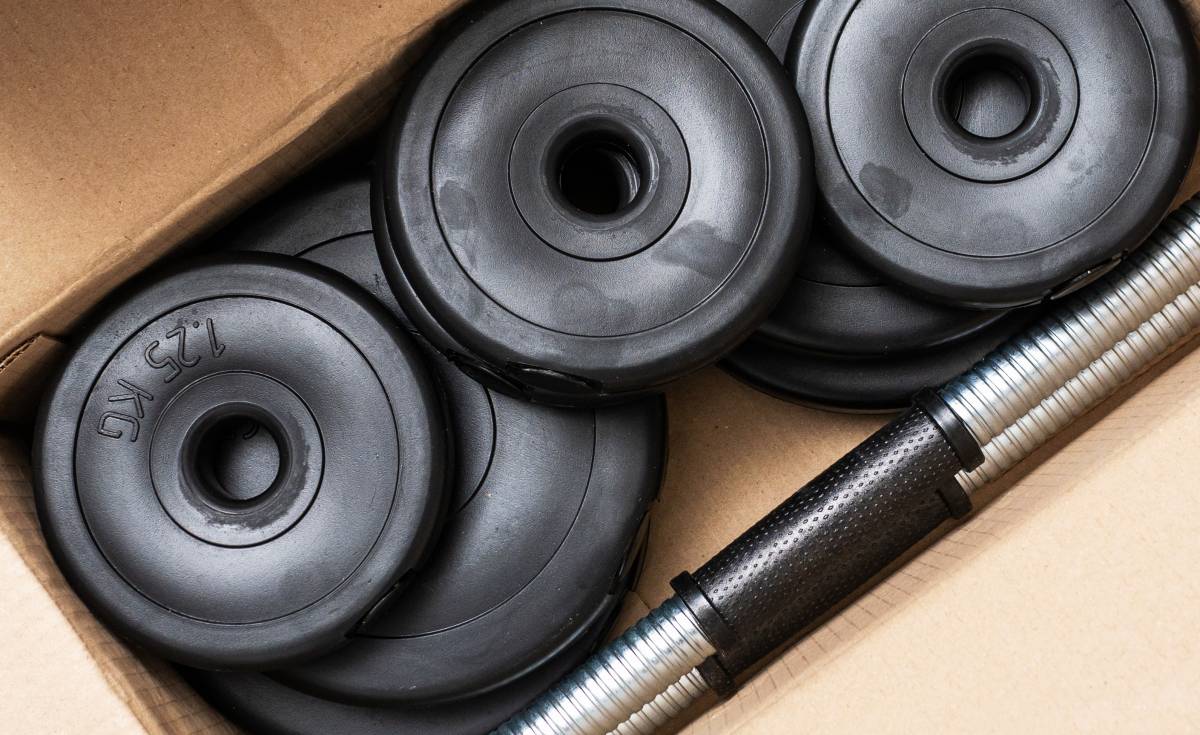
How to move gym equipment safely
Read more

How to pack books for moving
Read more

How to pack kitchen items
Read more
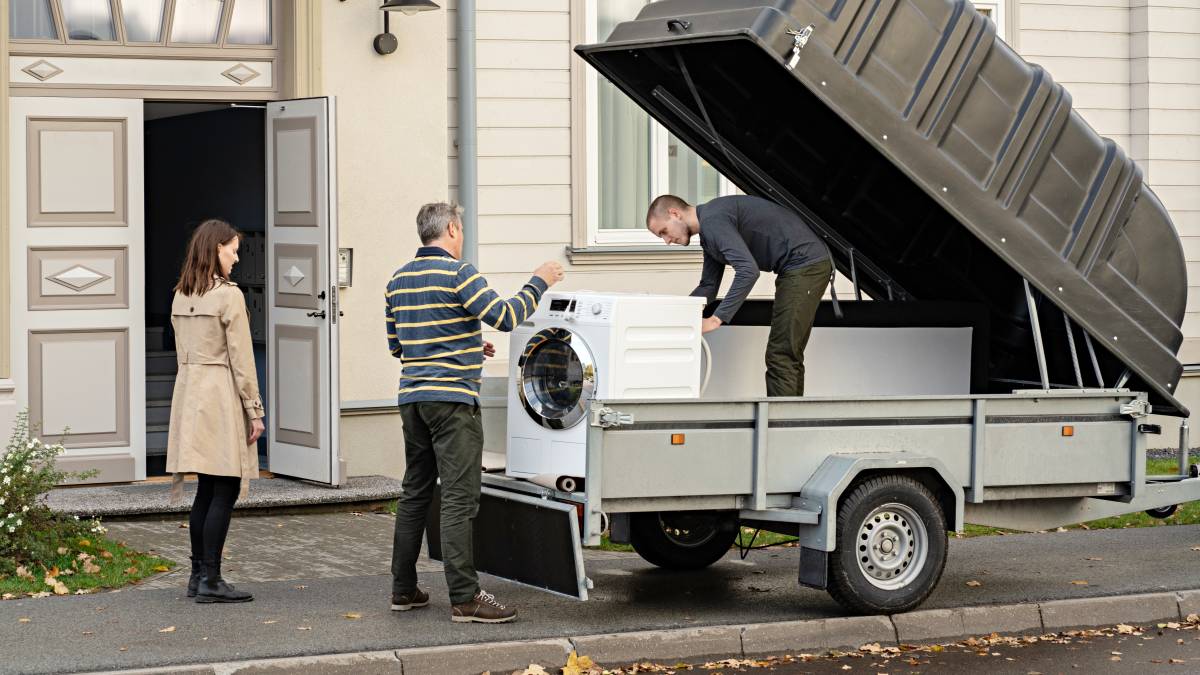
How to move a washing machine
Read more

How to pack artwork for moving
Read more

How to move a shed
Read more

How to pack bedding for moving
Read more

How to move a pool table
Read more
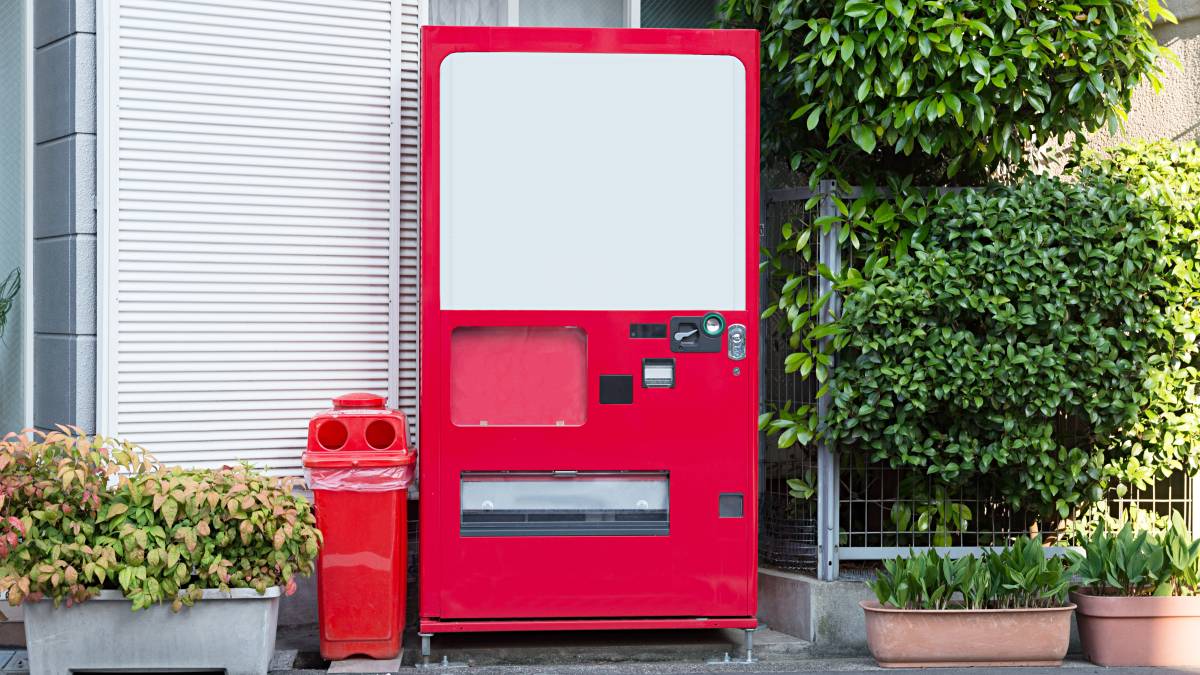
How to move a vending machine
Read more
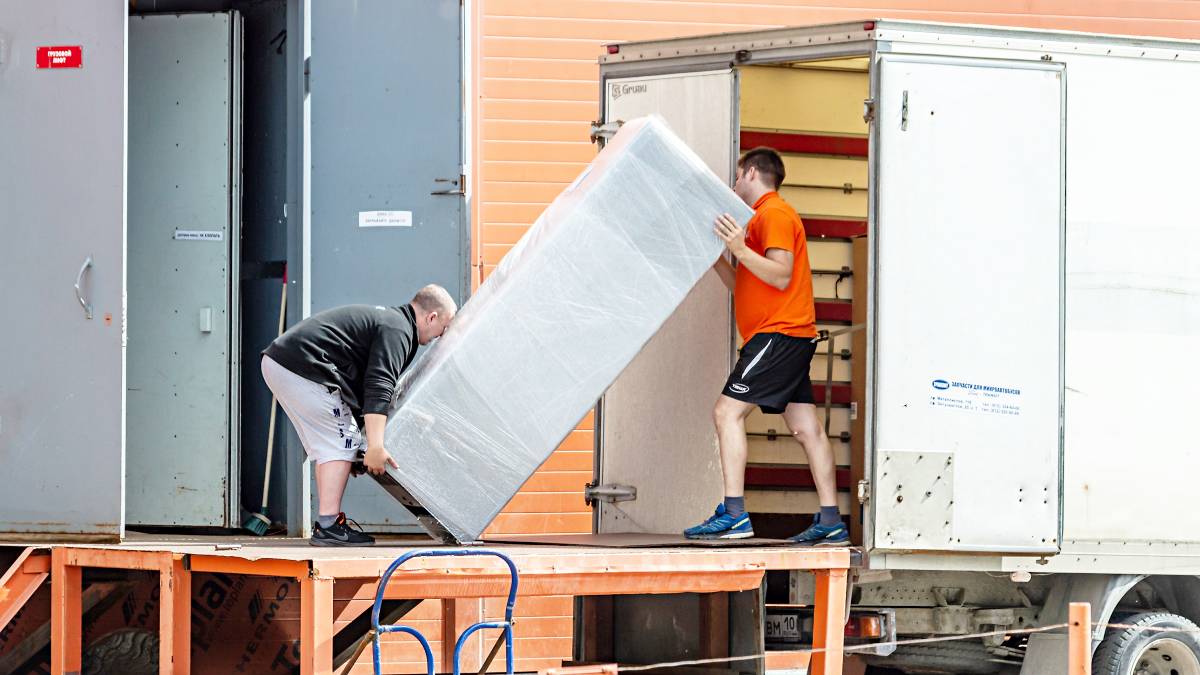
How to move a refrigerator
Read more

How to pack a moving truck
Read more

How to move a pinball machine
Read more

Where to get moving boxes for free
Read more

How to wrap furniture for moving
Read more

What movers won’t move
Read more

The ultimate packing and moving list
Read more

Moving out of state checklist
Read more

Moving interstate checklist
Read more
Related price guides
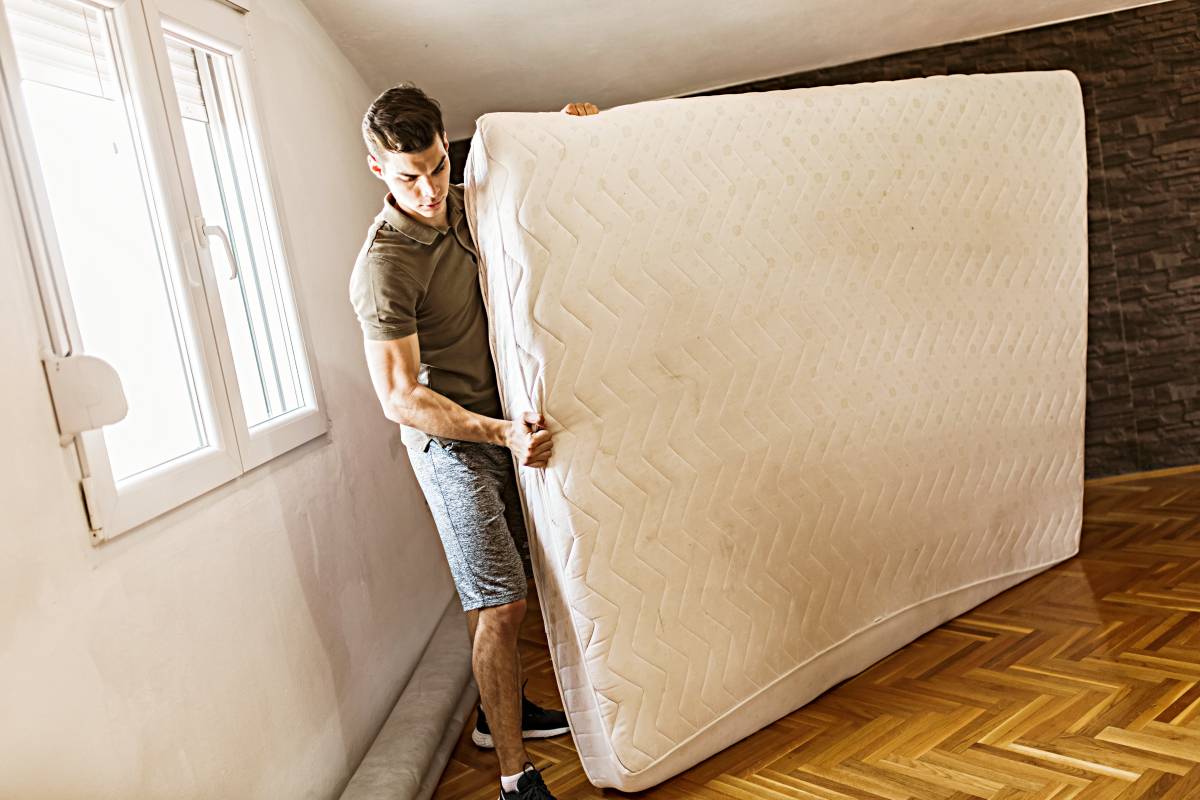
How much does mattress removal cost?
Read more

How much do packers cost?
Read more



















